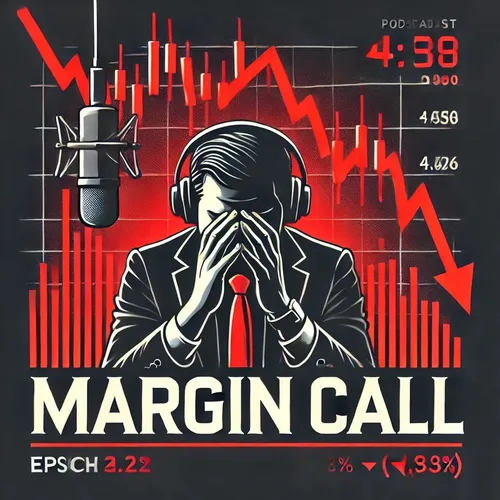Margin Calls and Short Positions: Rippling Risks in Financial Markets
- Author
- Quiet. Please
- Published
- Sat 26 Jul 2025
- Episode Link
- https://www.spreaker.com/episode/margin-calls-and-short-positions-rippling-risks-in-financial-markets--67128502
Margin calls and short positions are tightly connected concepts in financial markets, and when short positions run into trouble, the consequences can ripple through trading desks and entire sectors. To begin, margin trading allows an investor to borrow funds from a broker to increase their buying power for trades, using deposited assets as collateral. When someone opens a short position, they are essentially borrowing shares from the broker to sell on the open market, expecting to buy them back later at a lower price to return to the lender and pocket the difference. This strategy is only profitable if the price falls as anticipated.
Trouble comes when the price of the security unexpectedly rises instead. Since the investor must eventually buy the shares to return them, there is theoretically unlimited risk — the stock can keep rising, multiplying losses. To manage this risk, brokers require margin, a minimum amount of equity in the account, to cover potential losses. When the value of the collateral falls below required levels due to adverse price movement, the broker issues a margin call. Interactive Brokers explains that a margin call is the broker’s demand for the trader to deposit additional funds or securities to restore account equity to the required margin level.
If the investor fails to meet a margin call, the broker can swiftly liquidate enough assets in the account to cover the firm’s risk, often without prior notice. According to StockGro, if a trader cannot or does not meet the call, positions may be forcefully closed at market prices, and heavy penalty interest may be imposed on outstanding amounts. Failing to exit positions on time exposes the investor to escalating losses and can trigger forced buying in illiquid or rapidly rising stocks — amplifying losses further if there are no willing sellers, or if the stock hits a trading limit known as a circuit breaker.
When margin calls begin cascading through many accounts or institutions, it often signals that short positions are in trouble. This scenario has played out famously during so-called “short squeezes.” A short squeeze occurs when a heavily shorted stock rises rapidly, forcing more and more short sellers to buy back shares at higher and higher prices to avoid catastrophic losses or meet margin calls. This frantic buying can itself drive prices even higher, turning a manageable loss into a runaway one. Media coverage and platforms such as Morningstar have documented how these events can impact stock prices far beyond normal fundamentals and, in some cases, produce systemic risks as forced liquidations spill into other holdings or asset classes.
The risks of margin trading and short selling are not limited to stocks. Charles Schwab notes that trading in derivatives like options and futures, which also rely on margin, carries significant risk — the leverage can magnify both gains and losses. If a trader is short futures contracts and the market moves against them, margin calls can come fast and with little warning, and not all investors can withstand the pace or size of the demands.
In complex portfolios using multi-leg option strategies or rolling positions across different maturities, as discussed in Interactive Brokers podcasts, traders must carefully monitor not just single trades but the combined margin needs of the whole portfolio. Rapid market moves or jumps in implied volatility can raise margin requirements overnight, leaving positions that seemed safe the day before suddenly vulnerable.
To avoid getting caught in a margin call spiral, disciplined traders keep a close watch on their available collateral and do not overextend themselves, especially in highly volatile or illiquid markets. Platforms and brokers often provide alerts for approaching margin call thresholds, though ultimately, responsibility for risk management falls on the individual or firm.
Thanks for tuning...
